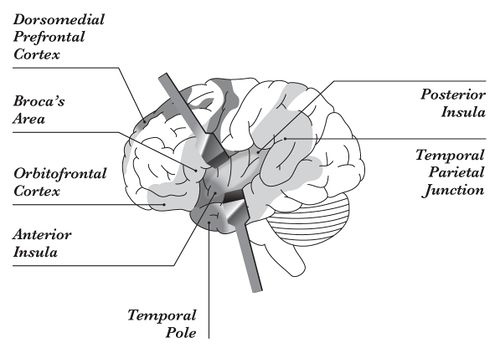Sense data from your eyes, ears, and other sense organs
A note for Lesson no. 7, "Our Brains Can Create Reality," in Seven and a Half Lessons About the Brain by Lisa Feldman Barrett.
Some context from page 115 is:
...compression begins with small neurons that carry sense data from your eyes, ears, and other sense organs.
Most of your sensory systems work in a similar way, except for the system that gives you your sense of smell, known as the olfactory system.
For a basic description of the visual system in your brain, see this reference.[1]. Also see:
- Vision is constructed
- Vision details (from the webnotes for How Emotions are Made: The Secret Life of the Brain)
For a basic description of the interoceptive system in your brain, see these references.[2][3]
For a basic description of the olfactory system, see this reference.[4]

For a recent summary of the insula's anatomical organization, see this reference.[5]
References
- ↑ Rainer Goebel, Larse Muckli, and Dae-Shik Kim. 2012. "Visual System." In The Human Nervous System (third edition), edited by Juergen K. Mai and George Paxinos, 1301–1327. Waltham, MA: Academic Press.
- ↑ Craig, A. D. 2015. How Do You Feel? An Interoceptive Moment with Your Neurobiological Self. Princeton, NJ: Princeton University Press
- ↑ Kleckner, Ian R., Jiahe Zhang, Alexandra Touroutoglou, Lorena Chanes, Chengie Xia, W. Kyle Simmons, Karen S. Quigley, Brad C. Dickerson, and Lisa Feldman Barrett. 2017. "Evidence For a Large-Scale Brain System Supporting Allostasis and Interoception in Humans." Nature Human Behavior 1 (5): 1–14.
- ↑ Tim J. Van Hartevelt and Morten L. Kringelbach. 2012. "The Olfactory System." In The Human Nervous System (third edition), edited by Juergen K. Mai and George Paxinos, 1219–1238. Waltham, MA: Academic Press.
- ↑ https://www.frontiersin.org/articles/10.3389/fnana.2019.00043/full